Table of Contents
Welcome to the world of skateboarding! Whether you're a beginner looking to learn the basics or a seasoned rider seeking to expand your skills, Kizworld has the ultimate guide for you. Get ready to embark on an exciting journey as we teach you How to learn the basic skateboarding skills and tricks, covering everything from choosing the right skateboard to mastering essential moves. Unleash your inner skater and prepare to hit the streets with confidence and style!
How to Learn the Basic Skateboarding Skills and Tricks: A Comprehensive Guide for Beginners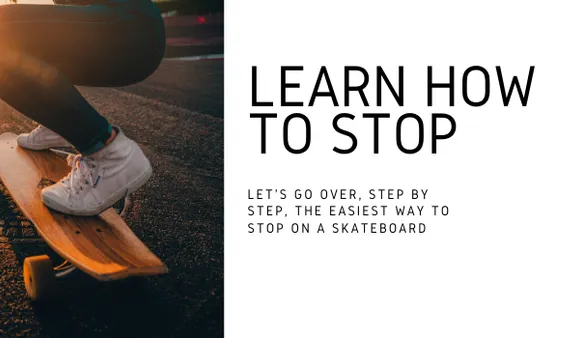
I. Mastering the Basics: A Comprehensive Guide to Skateboarding Fundamentals
Mastering the Basics: A Comprehensive Guide to Skateboarding Fundamentals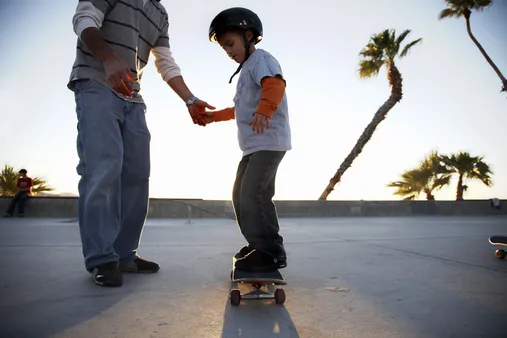
Skateboarding is an exhilarating sport that combines physical activity, creativity, and a sense of freedom. Whether you're a complete beginner or looking to improve your skills, learning the basics of skateboarding is essential for a safe and enjoyable experience. This comprehensive guide will take you through the fundamentals of skateboarding, from choosing the right equipment to mastering basic skills and tricks. Get ready to roll, ride, and conquer the streets with confidence!
Choosing the Right Skateboard
The first step to learning how to skateboard is choosing the right board. Consider your skill level, riding style, and personal preferences when selecting a skateboard. Different types of skateboards are designed for different purposes, so it's important to choose one that suits your needs. For beginners, a complete skateboard is a good option as it comes with all the necessary components, including a deck, trucks, wheels, and bearings.
- Deck: The deck is the main part of the skateboard and comes in various shapes and sizes. Choose a deck that is appropriate for your height and weight.
- Trucks: Trucks connect the deck to the wheels and allow you to turn and maneuver the skateboard. Wider trucks provide more stability, while narrower trucks offer better maneuverability.
- Wheels: Wheels come in different sizes and hardnesses. Softer wheels provide a smoother ride, while harder wheels are more durable and offer better grip.
- Bearings: Bearings are located inside the wheels and allow them to spin smoothly. Higher quality bearings will provide a faster and more enjoyable ride.
Read more about choosing the right skateboard
Essential Safety Gear for Skateboarding
Skateboarding can be a dangerous sport, so it's important to wear proper safety gear to protect yourself from injury. A helmet is the most important piece of safety gear, as it can help prevent serious head injuries. Other essential safety gear includes knee pads, elbow pads, and wrist guards. Wearing the right safety gear can help you stay safe and enjoy skateboarding without worrying about getting hurt.
- Helmet: A helmet is the most important piece of safety gear for skateboarding. Choose a helmet that fits snugly and is certified by a reputable safety organization.
- Knee Pads: Knee pads protect your knees from scrapes and bruises when you fall.
- Elbow Pads: Elbow pads protect your elbows from scrapes and bruises when you fall.
- Wrist Guards: Wrist guards protect your wrists from sprains and fractures when you fall.
Read more about the benefits of skateboarding
Basic Skateboarding Stance and Balance
The basic skateboarding stance is to place your front foot near the front bolts of the skateboard and your back foot near the rear bolts. Your feet should be shoulder-width apart and your knees should be slightly bent. To maintain balance, keep your weight evenly distributed between your front and back foot. You can practice your stance and balance by standing on your skateboard and gently pushing off with your back foot.
Front Foot Position | Back Foot Position | Weight Distribution |
|---|---|---|
Near the front bolts | Near the rear bolts | Evenly distributed |
Read more about the best skateboarding equipment and accessories
How to Push and Ride a Skateboard
To push and ride a skateboard, start by placing your front foot on the front bolts and your back foot on the rear bolts. Bend your knees slightly and keep your weight evenly distributed between your front and back foot. To push, place your back foot on the ground behind the skateboard and push off with your front foot. As you push, keep your weight centered over the skateboard and your knees bent. Once you have gained some speed, you can start to ride by shifting your weight to your front foot and lifting your back foot off the ground.
- Place your front foot on the front bolts and your back foot on the rear bolts.
- Bend your knees slightly and keep your weight evenly distributed between your front and back foot.
- To push, place your back foot on the ground behind the skateboard and push off with your front foot.
- As you push, keep your weight centered over the skateboard and your knees bent.
- Once you have gained some speed, you can start to ride by shifting your weight to your front foot and lifting your back foot off the ground.
Read more about how to improve your balance, coordination, and endurance with skateboarding
How to Stop and Turn on a Skateboard
To stop on a skateboard, you can either drag your back foot on the ground or use the brake on your skateboard. To drag your back foot, simply place your back foot on the ground behind the skateboard and drag it until you come to a stop. To use the brake, press down on the brake with your back foot. To turn on a skateboard, you can either lean in the direction you want to go or use your front foot to push the skateboard in the desired direction. Leaning in the direction you want to go is the most common way to turn, while using your front foot to push the skateboard is a more advanced technique.
To Stop | To Turn |
|---|---|
Drag your back foot on the ground | Lean in the direction you want to go |
Use the brake on your skateboard | Use your front foot to push the skateboard in the desired direction |
Read more about the history and culture of skateboarding
II. Conquering Common Tricks: Kickflips, Ollie, and Beyond
Conquering Common Tricks: Kickflips, Ollie, and Beyond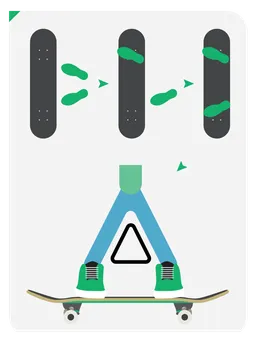
Once you've mastered the basics of skateboarding, it's time to take your skills to the next level with some common tricks. These moves can add flair and excitement to your skating, and they're also a great way to challenge yourself and progress as a skater. This article will provide you with a few of the fundamentals.
Kickflip
- Start by positioning your feet correctly on the board. Your front foot should be just behind the front bolts, and your back foot should be in the middle of the board.
- Bend your knees and push down on the tail of the board to pop it into the air.
- As the board comes up, slide your front foot forward and kick the nose of the board with your back foot.
- Catch the board with your front foot and land smoothly.
The kickflip is one of the most popular skateboarding tricks. It's a relatively easy move to learn, but it takes some practice to get it down consistently. Once you've mastered the kickflip, you can start experimenting with variations like the heelflip and the varial kickflip.
Ollie
- Start with your feet positioned as they were for the kickflip.
- Bend your knees and push down on the tail of the board to pop it into the air.
- As the board comes up, slide your front foot forward and your back foot back.
- Land smoothly with your feet back on the board.
The ollie is a fundamental skateboarding trick that is the foundation for many other tricks. Once you've mastered the ollie, you can start learning more advanced tricks like the kickflip, the heelflip, and the nollie.
Return to the Table of Contents
Grind
- Find a smooth, metal surface to grind on, such as a handrail or a curb.
- Position your skateboard perpendicular to the surface and start rolling.
- As you approach the surface, lift your front foot off the board and place it on top of the surface.
- Keep your weight centered over the board and slide along the surface.
Grinds are a great way to add style to your skating. There are many different types of grinds, so you can experiment to find the ones you like best.
Return to the Table of Contents
Safety First
Before you start trying new tricks, make sure you have the proper safety gear, like a helmet, knee pads, and elbow pads. And always skate in a safe place, away from traffic and other hazards.
III. Safety First: Protective Gear and Avoiding Injuries
Safety First: Protective Gear and Avoiding Injuries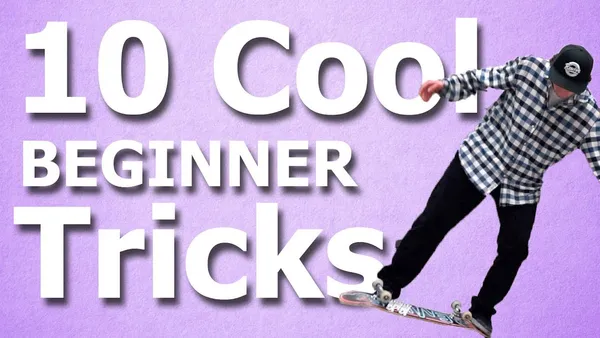
Before you hit the streets or skatepark, it's crucial to prioritize your safety. Wearing protective gear is essential to minimize the risk of injuries. A good-quality helmet is non-negotiable, as it can protect your head from serious impact. Knee and elbow pads are also recommended to safeguard your joints. Wrist guards can help prevent sprains and fractures. Consider investing in a sturdy pair of skateboarding shoes that provide good grip and ankle support.
In addition to protective gear, proper technique and awareness are key to avoiding injuries. Always start with the basics and gradually progress to more advanced tricks. Learn how to fall safely to minimize the impact on your body. Be mindful of your surroundings and avoid obstacles, uneven surfaces, and crowded areas. Stay hydrated and take breaks when needed to prevent fatigue and maintain focus.
Item | Purpose |
Helmet | Protects the head from impact |
Knee pads | Protects the knees from scrapes and bruises |
Elbow pads | Protects the elbows from scrapes and bruises |
Wrist guards | Protects the wrists from sprains and fractures |
Skateboarding shoes | Provides good grip and ankle support |
Remember, skateboarding is an inherently risky activity, and accidents can happen even with the best precautions. By taking safety seriously and following these guidelines, you can significantly reduce the chances of injury and enjoy skateboarding safely.
If you're new to skateboarding, it's a good idea to take lessons from a qualified instructor. They can teach you the basics of skateboarding, including proper stance, pushing, and braking. They can also help you develop good habits and avoid common mistakes that can lead to injuries.
Once you've mastered the basics, you can start practicing on your own. Be sure to choose a safe place to practice, such as a skatepark or an empty parking lot. And always wear your protective gear!
Read more about the most common skateboarding injuries and how to avoid them.
IV. Basic Skateboarding Stance and Balance
The proper stance is crucial for maintaining balance and control on your skateboard. Start with your feet shoulder-width apart, with your front foot slightly angled forward. Your knees should be slightly bent, and your weight should be evenly distributed between your front and back foot.
To maintain balance, keep your core engaged and your shoulders relaxed. Look straight ahead and focus on your destination. As you push off and start rolling, keep your weight centered over the board. Avoid leaning too far forward or back, as this can cause you to lose your balance.
- Feet shoulder-width apart
- Front foot slightly angled forward
- Knees slightly bent
- Weight evenly distributed between front and back foot
- Core engaged
- Shoulders relaxed
- Look straight ahead
- Weight centered over the board
It takes practice to develop good balance on a skateboard. Start by practicing in a safe place, such as a skatepark or an empty parking lot. Once you're comfortable with your balance, you can start practicing basic tricks.
Read more about choosing the right skateboard for your skill level and style.
V. Maintaining Your Skateboard: Tips for Longevity and Performance
Maintaining Your Skateboard: Tips for Longevity and Performance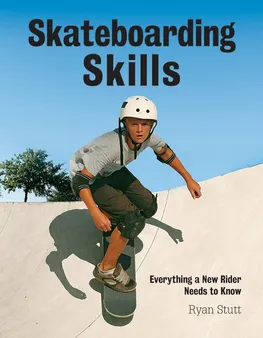
Your skateboard needs proper maintenance to ensure longevity and optimal performance. Here are some essential tips to keep your skateboard in top shape:
Component | Maintenance Tips |
|---|---|
Deck | Inspect the deck for cracks or signs of wear. Sand down rough edges and apply a protective coating to prevent moisture damage. |
Trucks | Check the tightness of the axle nuts and adjust as necessary. Lubricate the bearings regularly to ensure smooth rotation. |
Wheels | Rotate the wheels frequently to promote even wear. Keep them clean and free of debris that can affect traction. |
Bushings | Inspect the bushings for signs of wear or damage, and replace if needed. Different durometers of bushings can be used to adjust the responsiveness of your board. |
Grip Tape | Replace the grip tape when it becomes worn or dirty. Proper grip is essential for maintaining control of the board. |
By following these maintenance tips, you can extend the lifespan of your skateboard and enjoy it for many years to come. Read our guide on Learning the Basic Skateboarding Skills and Tricks to improve your skills on your well-maintained skateboard.
Bonus Tip: Store your skateboard in a dry, cool place when not in use. Avoid exposing it to extreme temperatures or direct sunlight, as this can compromise the integrity of the materials.
Related Posts:
- The Most Common Skateboarding Injuries and How to Prevent Them
- How to Find the Best Skateboarding Spots and Parks
- The Best Skateboarding Movies and Documentaries
- The Top Skateboarding Competitions and Events
- How to Train Like a Skateboarder
VI. Conclusion
As you continue your skateboarding journey, remember that practice and perseverance are key to mastering new skills and tricks. Don't be afraid to push your limits and try new things, but always prioritize safety and respect for others. With dedication and a positive attitude, you'll be shredding like a pro in no time. Whether you're cruising through the streets, hitting the skatepark, or exploring new terrains, skateboarding offers endless opportunities for fun, freedom, and personal growth. Embrace the ride and enjoy the incredible world of skateboarding!